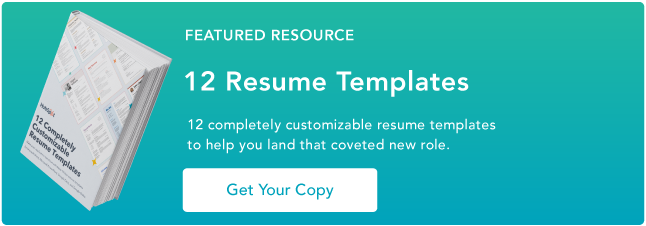Portfolios vs. Resumes — The Complete Guide
- December 17, 2023
- Knowledge Base
- 0 Comments

In today’s competitive job market, your income and career rely on knowing how to communicate your skills and experiences. To do so, you can choose one of two primary vehicles: a resume or a portfolio.
As a freelance writer and author, a portfolio is my greatest asset (and one I’ve been building since my first article was published at 19). Yet, when job searching over the years, a resume has been required by many positions.
Both a portfolio and resume display a person‘s professional skills and experiences, but what are the differences and unique opportunities that each presents?
Let’s look at the key differences between the two to help you pick the best tool for the job (search) at hand.
Portfolios vs. Resumes
A portfolio and resume help job seekers land work, but they have key differences in visibility, convention, and the review process.
Visibility
A resume is tailored for specific job applications. It’s most commonly updated and used when applying for jobs. Further, resumes should be tailored to each specific job application.
A portfolio, on the other hand, is a collection of a person’s professional skills and abilities available online 24/7. It may be viewed by a broader audience beyond just potential clients. Portfolios aren’t necessarily tailored to a specific job.
Convention
Resumes come with a very clear convention. These documents are one or two pages maximum, with experience listed in reverse chronological order. Resumes display your relevant qualifications while being as concise as possible.
A portfolio can be an interactive, creative, and extensive display of a person’s work. You can crumple up the concise document approach and share in-depth information.
That includes real-life samples, exercising any number of portfolio tactics, and creative ideas.
Review Process
A resume isn‘t only reviewed by potential employers; it’s first uploaded to a resume reader and scanned by artificial intelligence (AI).
As a result, following a strict format is often to your advantage, as it makes the document more scannable.
A portfolio is a collection of work samples that can only be reviewed by a real person. Creativity is your friend, as it’s another way to showcase your skills and abilities.
Portfolios — What are they?
A portfolio is a collection of work samples that demonstrate a person’s skills and experience. Portfolios used to be reserved for creative fields.
However, the modern job market has seen an influx of professional portfolios thanks to the gig economy.
Career culture has shifted away from single-job careers. While there may be a unicorn worker in your office who was hired at your company straight out of school, it’s a rarity.
Not only do workers change jobs regularly, but they also change careers more often.
Author and Harvard Business School faculty member Christina Wallace describes pouring yourself into one single job as “the riskiest move you can make” in her book The Portfolio Life. It’s estimated that 29% of workers have changed careers since graduating college.
This has fueled the need for professional portfolios. These repositories are a way of showing your work that focuses on displaying skills rather than summarizing experience. Careers that operate this way are on the rise.
Nicknamed a portfolio career, this is encouraged by the gig economy, where workers have traded a single full-time salary for contract-based roles. Economic uncertainty, such as pandemics and recessions, fuels this.
A portfolio includes details like the type of work that you do and your experience. This can also include any multimedia that displays your skills and experience, such as:
- Photos.
- Videos.
- Audio files.
- Video testimonials.
- Philosophy statement
- Written endorsements and reviews
Advantages of Portfolios
When does a portfolio outshine a resume? Let‘s look at the major perks of using this tool to display an individual’s qualifications.
You can persuasively display skills.
A resume is a brief description of your experience, while a portfolio is an entire collection of a person‘s skills. It doesn’t require you to take complex projects and boil them down to a brief paragraph.
There’s no need to condense an entire career enough to fit on one or two pages.
A portfolio shows all of your skills, experience, and past success in one simple package.
“In today’s rapidly evolving professional landscape, the lines between portfolios and resumes are becoming increasingly blurred,” shared attorney Ahn Min Hwan.
“A lot of professionals opt for online portfolios or personal websites where they sum up their resumes and also display samples of their work, certifications, and testimonials,” he says.
Visuals show instead of tell.
While portfolios have historically been used by web designers, writers, and others in creative industries, they’ve become more of a norm with the rise of portfolio careers. This used to be the key difference between a portfolio and a resume.
Portfolios are powerful and persuasive, especially when it comes to displaying creative talents.
“As humans, we are emotional decision-makers, and often we act on what we find visually appealing,” shared Gabe Marusca, founder of Digital Finest.
Gabe is an experienced web designer who creates websites and landing pages for coaches and consultants.
“In the creative space, having a visually pleasing portfolio not only makes you stand out against the competitors, but it speaks louder than words,” Gabe says.
You can demonstrate capability.
In a world where more than half of Americans have admitted to lying on their resume, portfolios slice through the noise. They show potential clients and employers the money.
“While the resume tells me the history, a portfolio shows me the capability,” shared Amanda Sexton, the founder of FocusWorks. “A portfolio is crucial if you’re in a field where your work can be visualized, demonstrated, or interacted with—like design, content creation, or web development. It offers tangible proof of your skills and achievements.“
Portfolio Examples
Resumes are limited to just one or two pages and follow a strict format, but a digital portfolio can take almost any form to showcase your skills. Let these examples inspire you to start designing right away.
This portfolio example from Nesha V. Frazier spans multiple web pages and shows various types of writing work.
What we like: This portfolio example shows writing samples broken up by category. It spans multiple pages, which is easily done on a portfolio thanks to the medium’s flexibility.
The next digital portfolio example is from Ralu Enea and showcases her skills as a web designer, highlighting her high volume of positive feedback.
What we like: The screenshots showing happy clients make this portfolio feel incredibly authentic and persuasive.
This final digital portfolio example from Gabe Marusca showcases his web design work.
What we like: This digital portfolio takes huge project samples and makes them viewable at a glance. It presents work in a really digestible format instead of leaving the viewer feeling overwhelmed.
Expert Tips for Portfolios
The most noticeable difference between a portfolio and resume design is that a portfolio can take almost any shape or form. Instead of that feeling overwhelming, let it feel empowering with these expert tips on how to get it right.
Use a tagline.
While a portfolio is a collection of your work, it can (and should) still have a sense of organization and structure. That’s where a tagline can help serve as a brief objective or summary statement.
“An attention-grabbing tagline is a terrific approach to bringing individuality into your portfolio while offering companies a broad view of what you can offer them,” shared Eran Mizrahi, the CEO of Ingredient Brothers.
“Bring some zing to the proceedings by capping them off with an unforgettable statement or slogan.” Ingredient Brothers summarizes its product with a memorable tagline on its website:
Keep your portfolio focused.
A portfolio doesn’t need to be a conclusive career summary.
While you may have work samples spanning many years, projects, and industries, a focused portfolio helps a hiring manager or client feel more excited about the potential than a broad portfolio.
“To create a great portfolio, I recommend showcasing only your best projects that highlight your ideal clients,” shared Gabe Marusca. “Ideally, your portfolio visuals should be in high resolution and focused on grabbing viewer attention.”
Resumes — What are they?
A resume is a document that summarizes your work experience as it applies to a specific job.
Often one or two pages long and accompanied by a cover letter, a resume displays relevant experience in reverse chronological order and is customized for individual job applications.
The concept of a resume hasn‘t changed much in your lifetime; in fact, it’s one of the only parts of the hiring process that hasn’t changed.
A well-crafted resume will display relevant skills in a quick and easy format. Broadly speaking, a resume should include any relevant achievements that demonstrate a person’s qualifications for a job.
Some standard features of a resume include:
- Soft skills.
- Contact details.
- Work experience.
- Relevant skills and life experiences.
- Academic and professional qualifications.
- Related volunteer jobs that you’ve worked.
- A professional summary statement (sometimes called a career summary statement).
Even though resumes themselves haven’t evolved much, the way hiring managers review them has. It’s estimated that resumes are reviewed for less than 10 seconds by a potential employer.
Job seekers can still improve their resume writing and see better results. Here are some of the advantages of using a resume over a portfolio.
Advantages of Resumes
How does a humble one or two-page document stack up against a portfolio? Here are the advantages of using a resume in your job applications.
It’s a universal tool.
While designing a creative portfolio may take days or weeks, a resume is a straightforward and universal tool that doesn‘t need to keep up with the trends (no matter where you’re applying for work).
“Nearly every professional across the globe needs a polished resume or CV when actively searching for work,” shared Amanda Augustine, certified professional career coach, certified professional resume writer, and career expert for ZipJob.
“The moment you decide to start looking for a new job, you instantly become a marketer, and your resume is a key component of your personal marketing toolkit,” Augustine says. “Additionally, your resume often serves as your first point of contact with a prospective employer and will shape that hiring professional’s first impression of your candidacy.”
You’ll create a straightforward snapshot.
While a portfolio has a sense of endlessness to it, a resume is a comforting bite-size look at your professional qualifications.
Arriving at a great resume is far less time-consuming, thanks to its concise and predictable nature. Plus, not being forced to reinvent the wheel saves you a tremendous amount of time.
“A resume really serves as a career snapshot for employers,” shared certified career counselor Brad W. Minton, founder of Mint To Be Career. “If composed well, it provides an overview of your ‘greatest hits’ that are relevant for future target roles so that employers can get a quick indication of your value add.”
Resume Examples
Let’s look at resume examples provided by professional resume writers and career experts. These resumes focus on different roles, fields, and levels of experience.
This first resume example was provided by Andrew Fennell, director of StandOutCV. It’s an example of an entry-level position with a focus on academic achievements:
What we like: The format of this resume leverages color and design while maintaining its readability.
The next resume example was provided by Sylvia Glynn, executive resume writer for Ultmeche. It’s based on the well-known Harvard resume template:
What we like: This no-frills approach to resume design is primed for AI readability while still showcasing all the relevant skills and experiences that hiring managers need to see.
This resume example was provided by Brad W. Minton, certified professional resume writer and founder of Mint To Be Career.
What we like: This resume has a straightforward design that will pass through AI scans, but it still includes some subtle design choices that will show personality to hiring managers.
Is your resume ready to be scanned by AI? Use the free tool Jobscan to see if your resume is helping or hurting you at this phase of the hiring process.
This final resume example was provided by Amanda Augustine, a certified professional career coach, resume writer, and career expert for ZipJob.
What we like: This is a great example of a two-page resume that uses space well by adding columns to break up dense sections. The indentation on this resume also improves readability and makes for smooth and pleasing formatting.
Expert Tips for Resumes
Is a resume right for your job search? Then, it needs to be well-designed, up-to-date, and ready to knock hiring managers’ socks off. Use these tips from expert resume writers to make it happen.
Translate experience, skills, and talent to desired role.
A generic resume that‘s submitted to dozens of companies won’t get the same result as a resume that details your skills and experiences as they directly relate to your desired role.
“A strong resume really boils down to how well you translate what you’ve done into what you can do for the next role,“ shared Brad W. Minton. ”How you do that is by researching the position and company and showcasing how your past experience developed relevant skills for the role you’re seeking now, as well as creating qualitative and quantitative impact.”
[video: https://www.youtube.com/watch?v=0oG8lP_T1Q4&ab_channel=HubSpotMarketing]Design resumes for functionality.
Designers, writers, and other creatives will be tempted to make their resumes unique and memorable, but that flair is best saved for your portfolio. Overly creative designs stuffed onto one or two pages lead to confusion and sacrifice functionality.
“When formatting and structuring your resume, you need to think about its function rather than just making it look nice. It has to be easy for recruiters to read and pick out the info they are looking for,” shared Andrew Fennell, director of StandOutCV.
Fennell recommends that sections be clearly defined with bold heading and white space. The text should be broken up into bullet points, and the color scheme and font need to make the text crystal clear to readers.
“Photos, icons, and other graphic features are nice to have, but focus on the important stuff first,” Fennell says.
Update and include your LinkedIn account.
A portfolio and resume are actually not stand-alone resources, as resumes can include clickable website links to other resources. Hiring managers will often reach for another snapshot of your skills and abilities: your LinkedIn account.
“My top resume tip is simple, but we often see it overlooked as recruiters. Include a clickable link to your LinkedIn profile just below your name on your resume,” shared Mike Basso, founder and CEO of Sales Talent Command.
“Because of its predictable format, many recruiters and hiring managers like to review a candidate’s LinkedIn profile for additional information,” Mike says.
If you need to be convinced of the power of LinkedIn for job seekers, find someone who’s active on the platform and look at the work experience section of their account.
You may see a blurb that says, “LinkedIn helped me get this job,” which you can see on my account for a position with the SEO company forank:
“Your LinkedIn profile can do a great job of differentiating you from other candidates if well-optimized. So, make it easy for those considering you for opportunities to find your impressive LinkedIn profile,” said Mike Basso.
Update your account and then initiate a LinkedIn strategy to help your account be more attractive to potential employers.
Making the right choice
When making the choice between a portfolio and a resume, see if the decision has already been made for you. The first question to ask is, what is the hiring manager or potential client asking to see?
Your portfolio vs resume debate ends if the hiring process is clearly outlined for you already. When the hiring process is less defined, consider how your experience and skills are best demonstrated and weigh these factors.
- What are the other candidates for this position or contract submitting to demonstrate their skills?
- Does your work require in-depth information to be explained, or can it fit on one or two pages?
- How can you prove your success in past roles?
- Do you have visual examples of your work?
As you’re packaging all the proof of your skills, you need to consider whether a portfolio or resume can showcase your skills and experience best.
If work samples and examples of your work would help you stand out to a hiring manager, aim for a portfolio.
Designers, writers, and anyone who works with multimedia will be able to showcase their skills better with a portfolio than a resume.
However, the majority of open work positions will ask for a resume so that it can be scanned using AI and sent through the standard hiring pipeline. Sometimes, there’s a case for both tools to be used.
When to Use Both
When choosing which tool can help demonstrate your professional capabilities, the answer might be both. While they do have their differences, a portfolio and resume can work in tandem instead of being pitted against each other.
When leveraged properly, it works to your benefit.
“In some cases, using both a portfolio and resume can be highly beneficial,” shared Nate Djeric, founder and career counselor at CareerBoost.io.
“For example, if you’re applying for a marketing role that requires both strategic thinking (resume) and creative execution (portfolio), presenting both can give you an edge,” Nate says.
Consider adding a link to a digital portfolio directly on your resume and also using your portfolio as an excuse to follow up with hiring managers and provide additional information.
Getting Started
Creating an effective portfolio or resume is an imperative task when you‘re putting yourself out there to potential employers and clients.
With these examples, best practices, and expert tips, you’re prepared to package your talent and impress every hiring manager.
![→ Download Now: 12 Resume Templates [Free Download]](https://no-cache.hubspot.com/cta/default/53/4ec95757-585e-40cf-9189-6b3885074e98.png)




